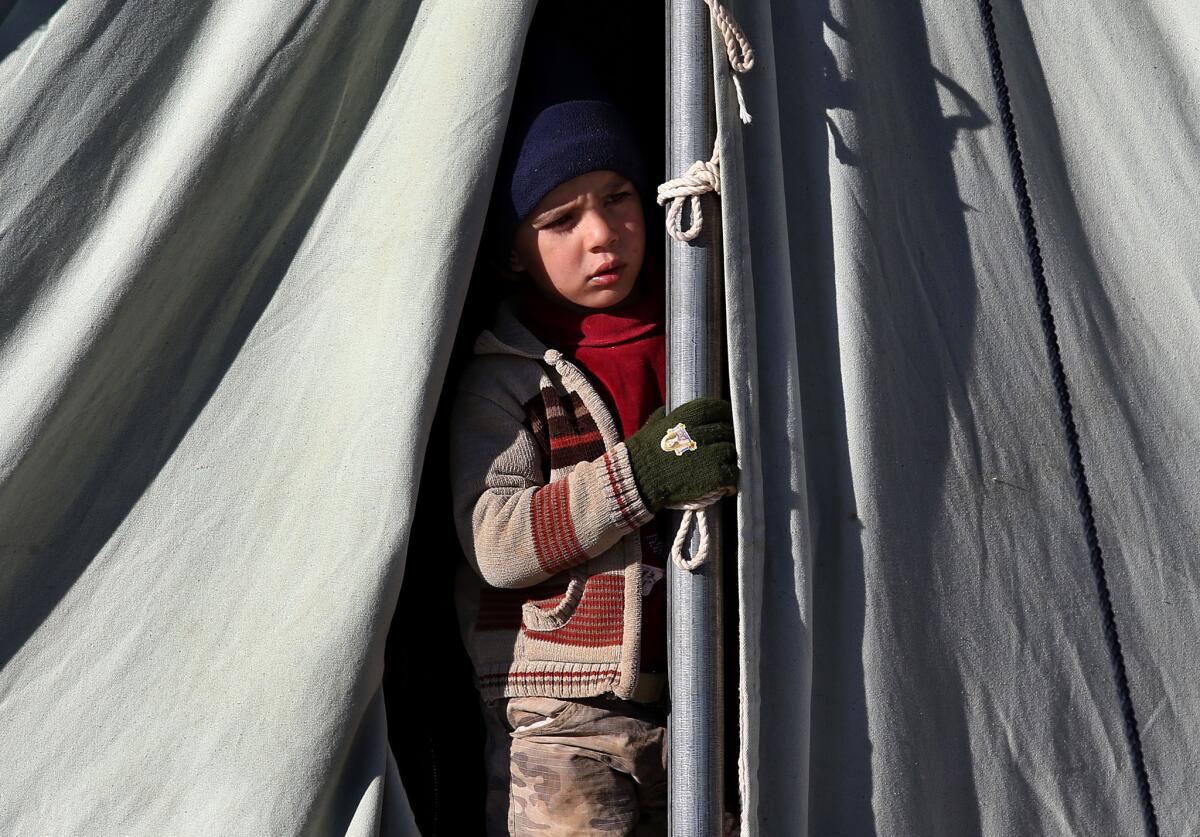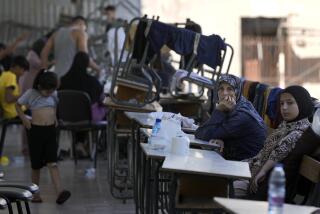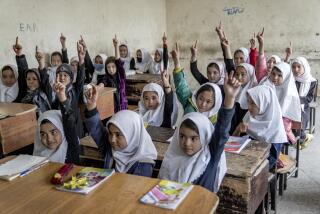Syrian refugee children face harsh conditions, uncertain future

Child refugees fleeing the war in Syria face lives of isolation, exploitation and insecurity in neighboring countries, according to a report released Friday by the United Nations.
The study by the Office of the U.N. High Commissioner for Refugees looked at Syrian refugee children in Lebanon and Jordan and found that a staggering number are growing up in broken homes, missing out on education and serving as the primary breadwinner.
More than 1.1 million children have fled Syria, most of them to neighboring countries, with many more internally displaced.
Many refugees are living in cramped apartments shared by several families or even makeshift shelters or tents. Nearly a third of the children surveyed said that they leave their home once a week or less.
As the weather grows colder, refugees living in tents face even more hazards. This week, three children were reported killed in a Jordanian refugee camp when a heating stove set their tent afire. More than 12,000 children have been killed in the war and nearly 300,000 injured, according to the opposition Syrian Network for Human Rights.
âIf we do not act quickly, a generation of innocents will become lasting casualties of an appalling war,â U.N. High Commissioner for Refugees Antonio Guterres said.
The report comes amid growing concern about the lingering effects of the Syrian civil war on children; some worry that it is creating a lost and stateless generation. The UNHCR has found that the majority of refugee infants surveyed in Lebanon did not have birth certificates. A similarly low number of birth certificates are being issued to Syrians born in Jordan.
More than 3,700 refugee children have fled Syria unaccompanied or separated from both parents, and at least 70,000 refugee families are living without fathers, the report said.
These children are often left defenseless and subject to exploitation.
Refugees often flee their homes with few personal belongings, and family savings can run out quickly, especially in host countries with a higher cost of living. Families needing cash often send their children to work and the U.N. researchers found some as young as 7 laboring long hours for little pay, sometimes in dangerous or exploitative conditions.
In Jordan, nearly half the refugee households depended partly or entirely on the income of a child.
As a result of child labor and the lack of access to education, the majority of Syrian refugee children are not enrolled in school, the report says.
ALSO:
Mexico: Police slain in troubled Michoacan state
Eyes water, throats burn as Iranâs capital endures siege of smog
Afghanistan: U.S. ambassador says onus is on Karzai to sign pact
More to Read
Sign up for Essential California
The most important California stories and recommendations in your inbox every morning.
You may occasionally receive promotional content from the Los Angeles Times.











